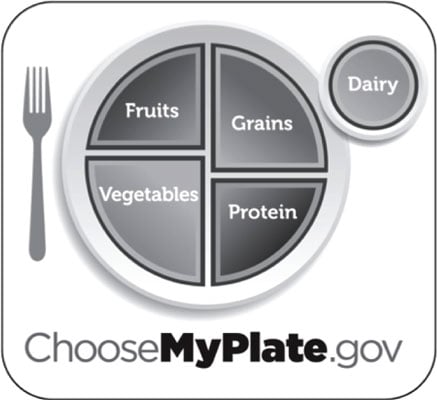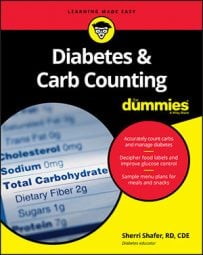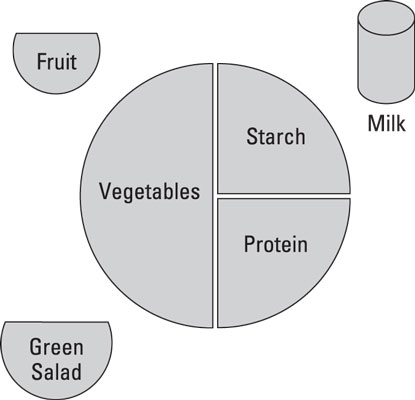Type 2 diabetes means your insulin is having a hard time helping you to properly use the glucose from the foods you eat. The more you eat at one time, the harder it is to control blood-glucose levels. The first step is to distribute food among three main meals, with optional snacks if needed. Keep the snack portions controlled.
Balancing your plate with the plate model
Policy makers and health experts try to guide Americans to eat healthier. For many years the Food Pyramid was used to guide nutrition, but now the pyramid has been replaced with the Choose MyPlate image. The plate image is visually simple to understand. The idea is to choose from a variety of food groups and to control portion sizes. Simply fill your plate in the manner shown.Imagine a line down the middle of your plate. Half the plate goes to grains and proteins with a little over one-fourth of the plate going to starch and the remainder allotted to protein. The other half of the plate is for fruits and vegetables, with the vegetable portion a little bit bigger than the fruit portion. A serving of milk is included if desired.

The Choose MyPlate image created by the U.S. Department of Agriculture.
ChooseMyPlate.gov is a great place to find information on how to choose healthy options within each food group. You can find tips geared specifically to preschoolers, school-aged children, teens, college-aged students, adults, and for pregnancy. The educational materials and online tools are well worth exploring.
When using the MyPlate method to manage portions with diabetes, use vegetables from the nonstarchy vegetable list to fill the "vegetable" section. The starchy vegetables and legumes should be counted in the grains group because they are similar in carb composition.It is fine to modify your plate to include even more vegetables than the Choose MyPlate model encourages. See the following figure for a meal-planning alternative that allows for more vegetables. Feel free to fill half of your plate with nonstarchy vegetables and add a leafy green salad if desired. When learning to cut back on other foods, salads and vegetables are the perfect foods to fill the void. Fruit can be consumed with the meal or as a between-meal snack.
Fruit served at the end of the meal may satisfy your sweet tooth and make it easier to skip dessert. A little whipped topping over berries feels decadent but doesn't add that many extra calories, carbs, or fat.
Handling portions with the hand model
Portion control is literally at your fingertips. If you want to keep things simple, you can use your own hands to visually guide serving sizes. Hands are certainly convenient, as you never leave home without them!
- Cooked starches: Serve the size of your tightly clenched fist.
- Protein: Serve the size and thickness of the palm of your hand.
- Vegetables: Serve enough to fill your two cupped hands.
- Fruit: Serve the size of your tightly clenched fist.
- Fat: Limit serving to the size of your thumb.


